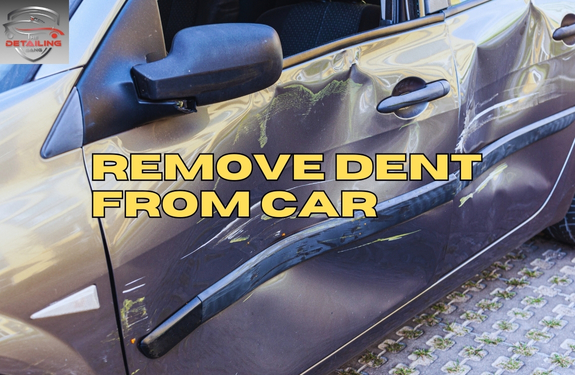
How to Remove Dents from Your Car: Complete DIY & Expert Methods
✏ A Nath | 📅 04 Jun 2024 | 🔖 Denting and Painting
Dents in your cars body can be nasty and frustrating, but you can often fix them yourself without spending a lot. Common causes include minor crashes, hail, and parking lot bumps. DIY repairs can save you money and time.
However, its important to know that some dents may be too difficult to fix on your own and might need an expert repair. So in this blog, well provide you with some easy tips for how to remove dent from car on your own, so stay tuned till the end.
Common Causes of Car Dents
- Parking Lot Accidents
- Tree Branches
- Road Debris
- Minor Collisions
- Street Animals
How to Assess the Dent on Your Car
Before you begin repairing a dent, its important to evaluate its details:
- Size, Depth, and Location: Examine how big & deep the dent is and identify its position on the vehicle.
- Inspect for Cracked or Damaged Paint: Check if the paint has been cracked or chipped around the dent. If the paint is damaged, address it separately to avoid rust issues.
- Decide on Repair Suitability: Based on your inspection, decide if the dent can be repaired at home or if you need a professional.
Prepare the Dent for Repair
Proper preparation is key to a successful dent repair.
- Clean the Area: Remove all dirt, grease, and debris from the dented area to avoid any issues with the repair.
- Protect the Surrounding Paint: Use painters tape to cover the area surrounding the dent. This will protect the surrounding paint from any potential damage during the repair.
DIY Methods to Fix Car Dents
These are the top 5 DIY car dent repair methods that can help you remove a car dent yourself without any professional help.
1: Use a Plunger to Push the Dent Back
2: Hairdryer & Compressed Air Combo
3. Use the Vacuum Cleaner’s Suction Power
4: DIY Dent Puller Kits
5. Boiling Water Method for Plastic Bumpers
1: Get a small dent out of a car with a Plunger
A plunger can be a surprisingly effective tool for small to medium-sized dents, especially if they’re on flat surfaces like doors or hoods. 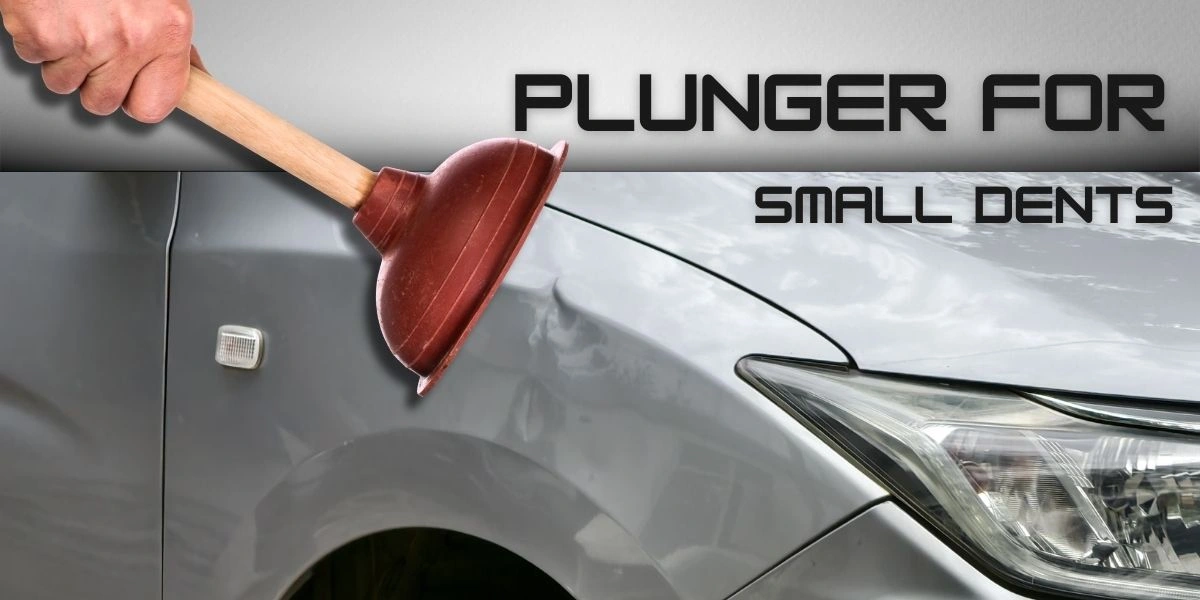 Step-Step by Step Guide:
Step-Step by Step Guide:
- Clean the Area: Ensure the dent and the surrounding area are clean to get a better seal.
- Wet the Plunger: Apply a bit of water to the plunger’s edge to create a vacuum seal.
- Plunge Away: Place the plunger over the dent and push and pull until the dent pops out.
- Inspect Your Work: Inspect the area and repeat the process if necessary.
2: Fix a dent using a Hair Dryer or Heat Gun & Compressed Air Combo
This method works well for larger dents, as it uses thermal expansion and contraction to pop the dent out.
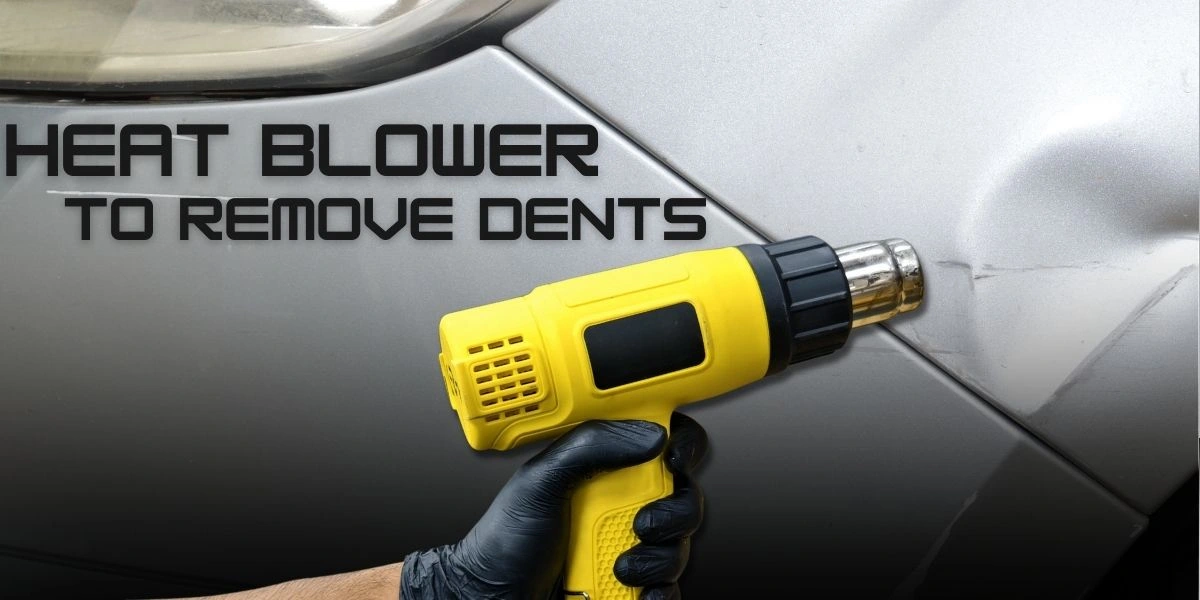
Instructions:
- Heat the Dent: Use a heat gun to apply heat directly to the dented area for about 30–50 seconds. The heat will expand the metal.
- Apply Compressed Air: Immediately spray the dent with a can of compressed air held upside down. The sudden cooling will cause the metal to contract and the dent to pop out.
- Inspect and Repeat: Check the area and repeat as necessary.
3. Vacuum Cleaner Suction for dent fix
This method is perfect for flat surfaces. Cover the dent with a suction cup and start the vacuum cleaner. If you hear a pop sound, it means the dent has been restored.
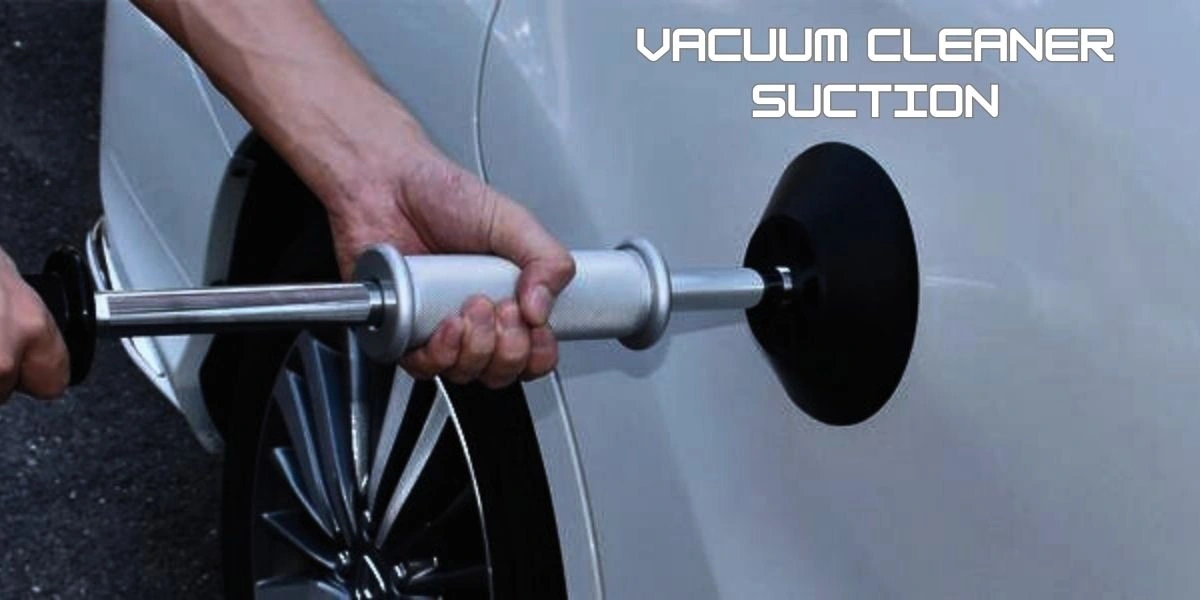
Instructions:
- Cover the Dent: Cover the dent with a suction cup.
- Use a Vacuum Cleaner: Use a vacuum cleaner to create suction over the dent.
- Pull the Dent Out: Pull the dent out using the suction power.
4: Using a Car Dent Removal Kit
There are several dent removal kits available on the market, which usually include specialized tools designed for specific types of dents.
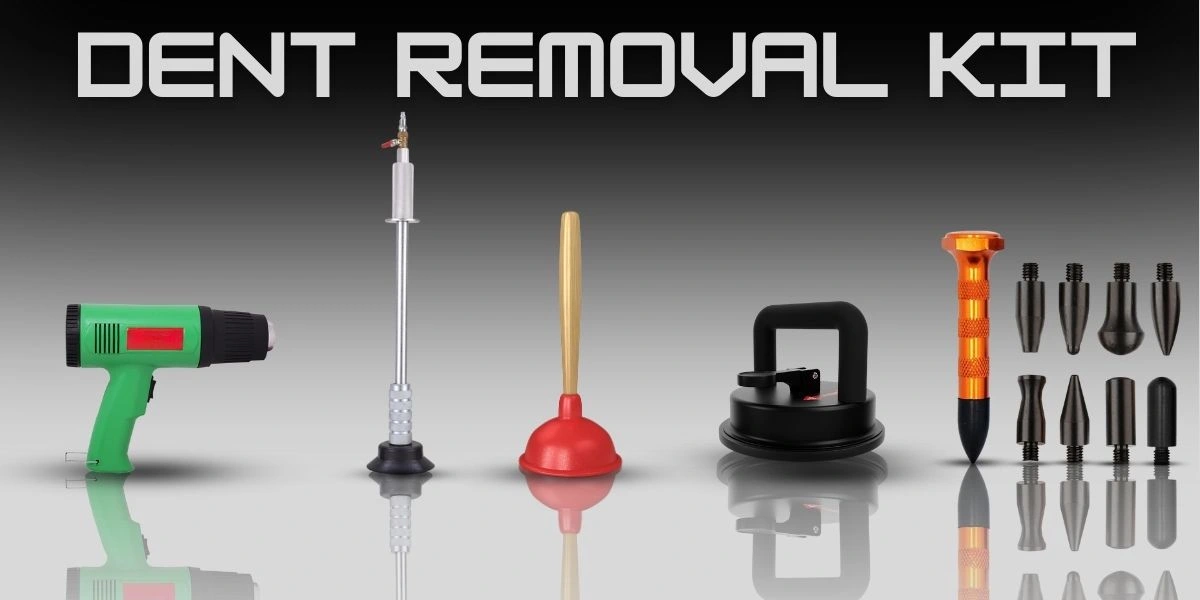
Tips for Using a Dent Removal Kit:
- Read the instructions: Follow the manufacturer’s guidelines for the best results.
- Clean the Area: Ensure the dent and the surrounding area are clean before starting.
- Use with Caution: Take your time and use the tools gently to avoid causing further damage.
5. Get a dent out of a car with Hot Boiling Water
This method is suitable for plastic bumpers. Pour boiling water on the dent, reach behind, and push it out. Then, splash cold water to cool the area rapidly, effectively removing the dent.

Instructions:
- Pour Boiling Water Over the Dent: Pour boiling water over the dent to loosen the metal.
- Push the Dent Out: Use a tool to push the dent out from behind.
How Professionals Fix Car Dents?
- Paintless Dent Repair (PDR)
- Filling and Painting
- Replacement Parts
There are different techniques for removing car dents, each suitable for different types of damage.
1: Paintless Dent Repair (PDR)
Paintless Dent Repair (PDR) is a technique for fixing small dents, dings, and minor collision damage on a cars body without disturbing the original paint. This method uses special tools to gently push the dent out from the backside, restoring the panel to its original shape. PDR is quicker, cheaper, and less invasive compared to traditional methods that require filling, sanding, and repainting.
Using a Dent Puller Tool
- Attach the Tool: Place the dent puller at the center of the dent, typically using either suction-based or glue-based pullers.

- Pull the Dent: Gently pull the tool to push the dent back into place. Be patient and avoid pulling too hard to prevent further damage.

2: Traditional Dent Repair (Filling and Painting)
Traditional Dent Repair (TDR) is a comprehensive process where we reshape the metal, fill dents with body filler, sand the area, and then repaint it to restore your vehicles original look. While its a versatile and cost-effective method that preserves your cars original paint, it does require more time and materials compared to Paintless Dent Repair (PDR). TDR is commonly used for larger dents, creases, and dents with paint damage that cannot be fixed with PDR alone.
Filling and Sanding the Dent
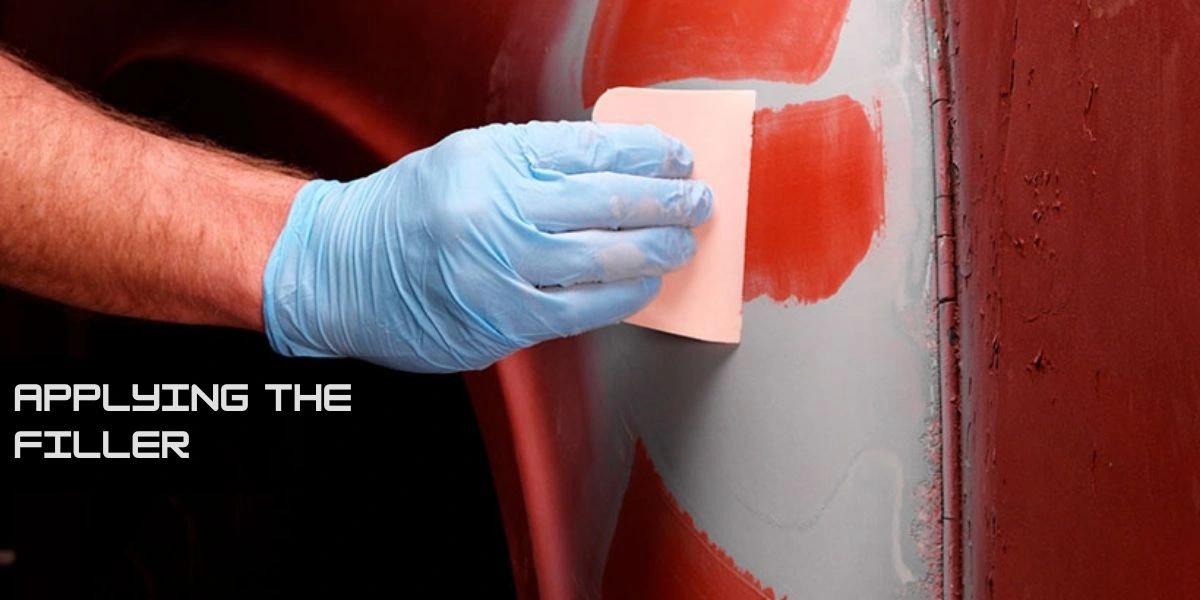
- Sand the Area: Once the filler has fully dried, use sandpaper to smooth the area gradually until it matches the surrounding surface.
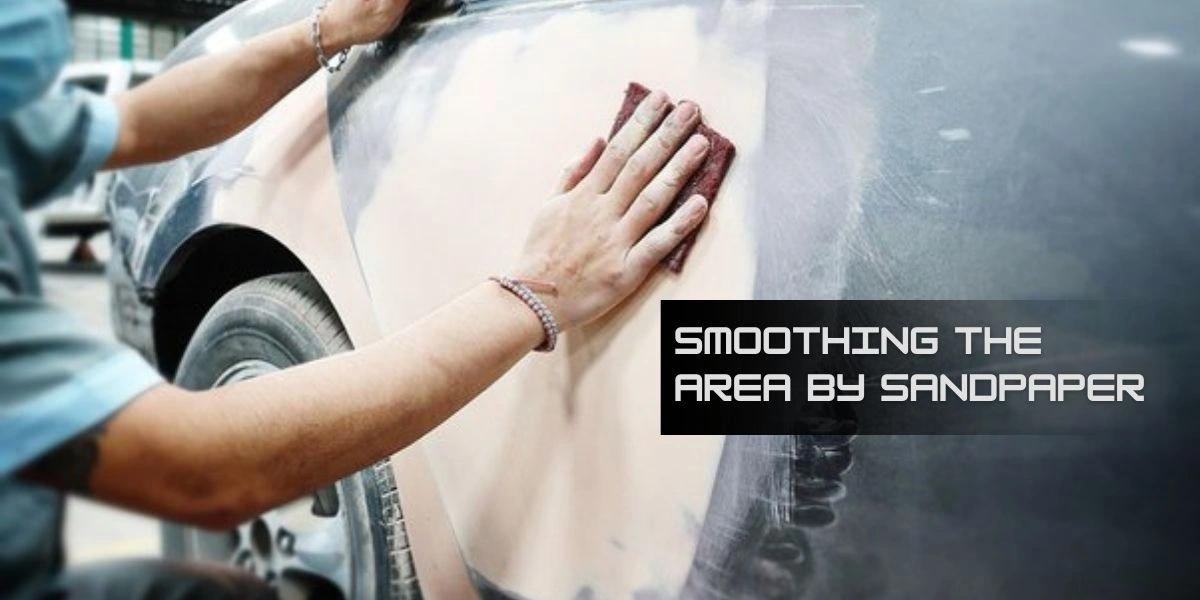
Finishing Touches
Once youve fixed the dent, finalize the job with these final touches:
- Inspect for Imperfections: Carefully inspect the repaired surface for any remaining imperfections. Repeat the repair process if needed.
- Touch Up the Paint: If the paint gets damaged, touch it up with matching automotive paint. Allow it to dry completely.
- Apply Protective Sealant: To protect the repaired area, apply a protective sealant or wax. This will not only maintain the shine but also prevent future damage.
The Significance of Quick Dent Fixing
- Prevent Rusting: Fixing dents quickly stops metal from rusting due to exposure, extending your cars life.
- Maintain Resale Value: A dent-free car sells for more, preserving its worth.
- Safety Concerns: Dents can weaken your cars structure, affecting safety during accidents.
- Cost-effective Solution: Early repairs save your money by avoiding larger repair bills later.
Is it OK to Repair a Dent by Yourself?
- When to DIY: Yes, its OK to repair a dent by yourself if the car dent is small and doesnt involve any paint damage. You can use simple tools like a plunger, hair dryer, or a dent removal kit. These DIY methods are cost-effective and can fix minor dents quickly. Just make sure the dent is simple; if its not then you should call a professional.
- When to Seek Professional Help: When DIY methods are not sufficient to repair the dent, especially if its large or has caused paint damage, professional help is recommended. They have the necessary tools and experience to handle complex repairs safely and effectively.
Finding Professional Dent Repair Services
If the dent is too difficult to fix on your own, its important to find a reliable repair shop.
- Factors to Consider: Find a repair shop known for its good reputation, positive reviews, and reasonable prices.
- What to Expect: Professional services use special tools and techniques for high-quality results.
- Estimated Costs: Dent repair service costs can differ, so its important to get multiple quotes to ensure you get a fair price.
Maintaining Your Cars Appearance
Here are some tips to avoid future dents and maintain your cars appearance:
- Use Car Covers: Invest in high-quality car covers to protect your vehicle from environmental elements, harmful UV rays, dust, debris, and water stains. corrected
- Be Careful in Parking Lots: To avoid dents and dings, park away from other cars, especially in areas with heavy traffic. corrected
- Store Your Car in a Garage: Keep your vehicle in a sheltered spot, like a garage, to safeguard it from the elements and stray objects like basketballs and volleyballs.
- Avoid Extreme Weather: To avoid dents, keep your car out of areas where hail, heavy winds, and falling branches are common.
- Keep Things Off Your Car: Keep the top of your car clear and secure any nearby objects to prevent accidental dents and scratches.
Read More :
In Summary:
Removing car dents from the car yourself is a cost-effective way to maintain its look and value. Follow the tips in this blog to fix minor dents yourself, but for tougher dents, we recommend you consider professional help. A quick search for "car denting painting near me" will help you find reliable services. Keeping your car looking good makes every drive more enjoyable.
Remember, prevention is always better than a cure. Implementing smart parking strategies and investing in protective accessories can help keep your car dent-free. And if you ever need expert advice or services, don’t hesitate to reach out to TheDetailingGang.
Frequently Asked Questions
Q1. Can dent be removed from a car?
Ans. Absolutely Yes!, dents can be removed from a car using various methods and tools, such as suction cup dent pullers, paintless dent repair (PDR) techniques, and specialized dent removal kits. A good plunger can help you get rid of a medium-sized dimple on your beloved car. Use a flat or cup plunger, place it on the dent with some water, and pull with maximum strength. For larger dents, pull from all angles.
Q2. How do I pop out a dent in my car?
Ans. To pop out a dent in your car, you can use a suction cup dent puller or a paintless dent repair (PDR) kit. These tools work by creating a vacuum that lifts the dented area, allowing it to be removed without damaging the surrounding paint. For smaller dents, you can also try using a hair dryer to heat the area, which can help loosen the dent and make it easier to remove.
Q3. Can a dent be fully removed?
Ans. Surely Yes!, Most dents can be fully removed, especially if they are minor and shallow. However, more severe dents, or those with significant damage to the paint or body, may require professional help.
Q4. What dents cannot be removed?
Ans. Dents that are too deep, extensive, or have significant damage to the paint or body may not be removable. Additionally, dents that have been left untreated for a long time or have developed rust or corrosion may be difficult or impossible to remove.
Q5. Can hot water pop out a dent?
Ans. For certain, Yes!, hot water can be used to help pop out a dent. Applying heat to the dented area can loosen the dent and make it easier to remove. However, be careful not to apply too much heat, as this can damage the paint or the surrounding body.
Q6. How do professionals remove dents?
Ans. Professionals typically use specialized tools and techniques, such as paintless dent repair (PDR) methods, to remove dents from cars. These methods involve using specialized tools to gently massage the dented area back into shape without damaging the surrounding paint.
Q7. Do dent pullers really work?
Ans. Indeed, yes! Dent pullers can be effective in removing dents from cars by creating a vacuum that lifts the dented area without damaging the surrounding paint. However, while car dent pullers can be good, they are not a universal solution. They work best for small, shallow dents on flat surfaces and require careful handling to avoid further damage.
Q8. Does boiling water damage car paint?
Ans. Yes, boiling water can damage car paint. High temperatures can make the paint brittle and crack, causing further damage. Boiling water can cause the paint to expand and contract faster than a yo-yo dieter. Its best to avoid using boiling water or extreme heat to remove dents to prevent more harm.